

With the increasing number of Web Design and Web Development courses being offered in the US, students need to find a way to gain real-life experience working with businesses to build their portfolios. CRUX solves this problem by connecting web design/development students with small businesses to trade their products and services.
VIEW PROTOTYPE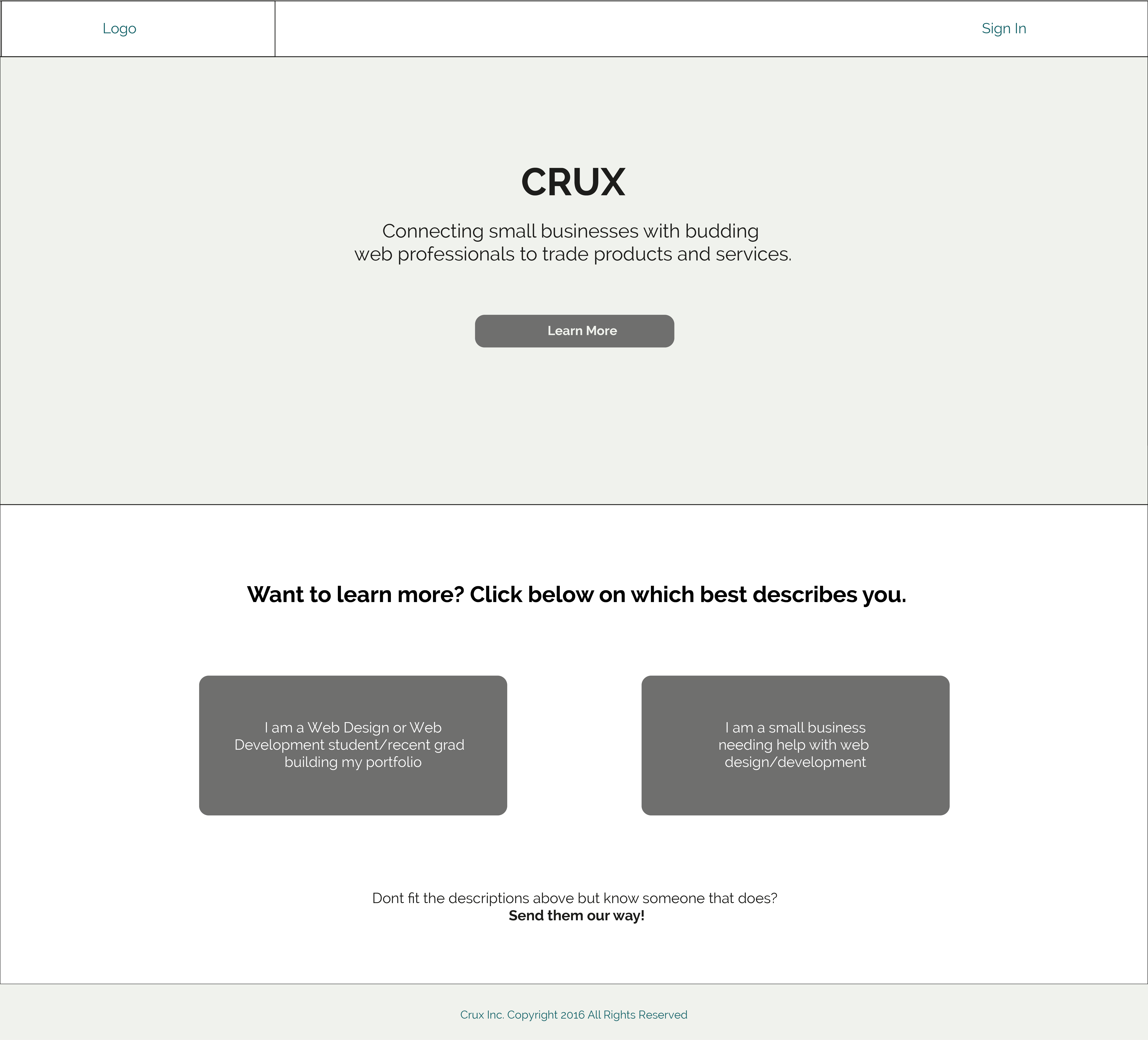
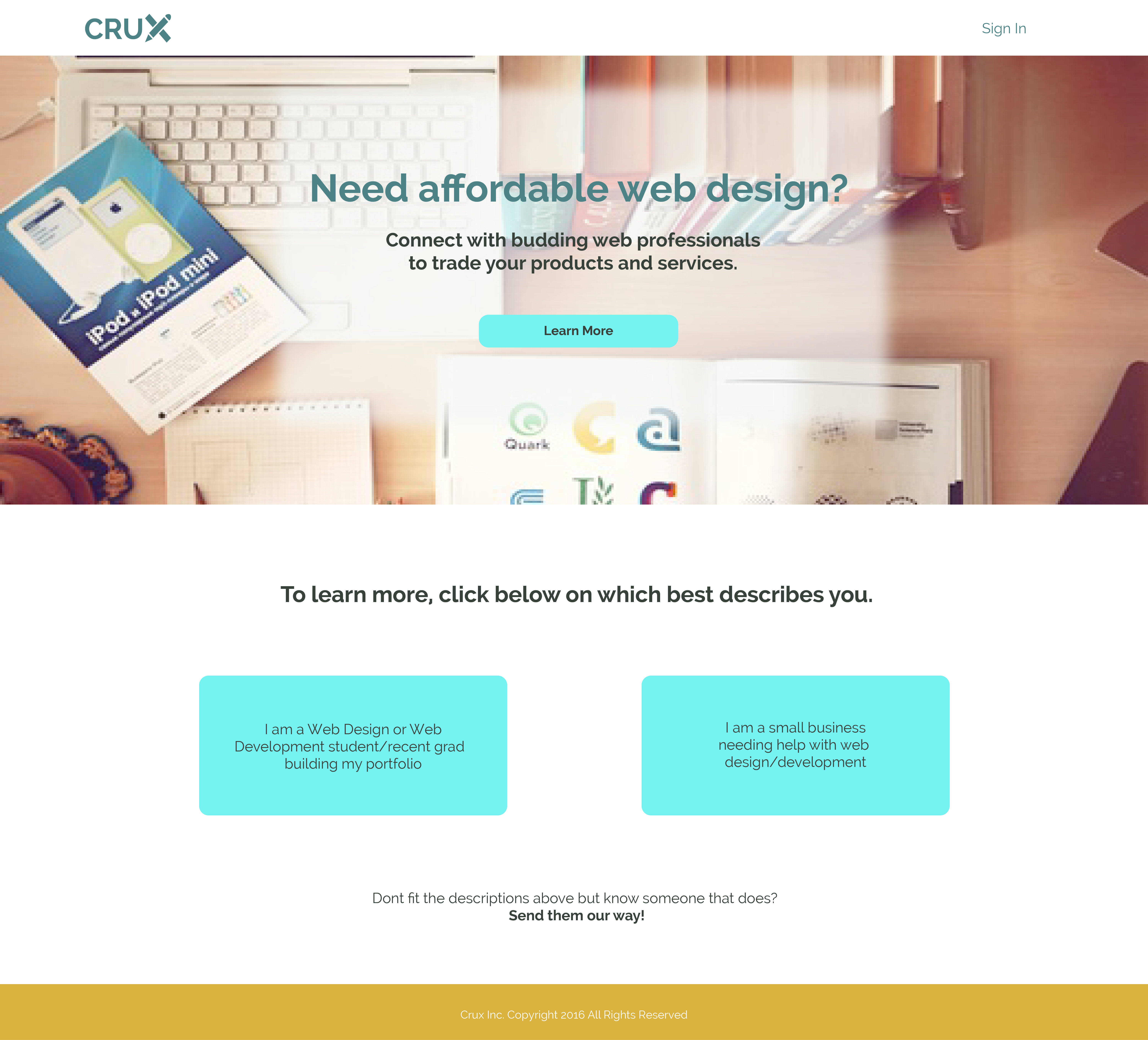
CRUX was inspired during my journey learning to design and code. After attending informational interviews with UX/UI Designers, Hiring Managers, and Front-End Developers from several companies, one of the common advice given to me was to work on a project with a business or organization to show that I can help someone else solve a problem and gain experience working with other people.
In current Design and Coding bootcamps, getting connected with businesses doesn’t happen until the end of your program, which elongates the process a student has to go through in gaining “real experience.” Some bootcamps encourage you to obtain freelance clients after you have completed your course, and this can be a daunting experience if you are not comfortable networking and asking for business and referrals.
For new and small businesses, affording professional web design and development services can also be costly on a start-up budget, often leading you to other ways to market and promote your products and services.

Design a product to help Web Design/Development students connect with small businesses to build their portfolios and gain experience working on real projects prior to looking for full-time work. In turn, new and existing small businesses are able to afford these services by offering payment with their products and services.
To understand how to develop the project’s MVP and measure interest, I initially deployed a survey to the Bloc Hacker Club, Block Slack Channel and SkillCrush MightyBell Network to get an understanding of the types of businesses web design/development students would be interested in doing work for if they were paid by trade. At first, my survey consisted of questions that required written answers which led to only 9 responses. Due to this, I rephrased the questions to be multiple choice, which got a higher response rate.
VIEW SURVEY
Of the 20 students total that responded, below is a list of common themes I found from their survey and written responses:
Grocery stores for the food
Hmmm. I really need money. And I don't spend it on much besides rent and groceries. So I guess Safeway or my evil landlord? I don't really want to work for either though. Maybe some free clothes here and there, but there's really no one store I do to, or maybe someone who could clean my apt and do my laundry, maybe free medical/dental/optemetry.
makeup/facial cream is expensive. I'm spending upwards of $100 a product, so that type of company.
I'm not very handy, so I'd do work for electricians, carpenters, and plumbers if I were paid with their respective talents. I also have 3 cats, so I'd work for a pet products company for their food and litter.
Companies that sell necessities - good quality food, clothes. But how can you buy needed items if you didn't get a paycheck?
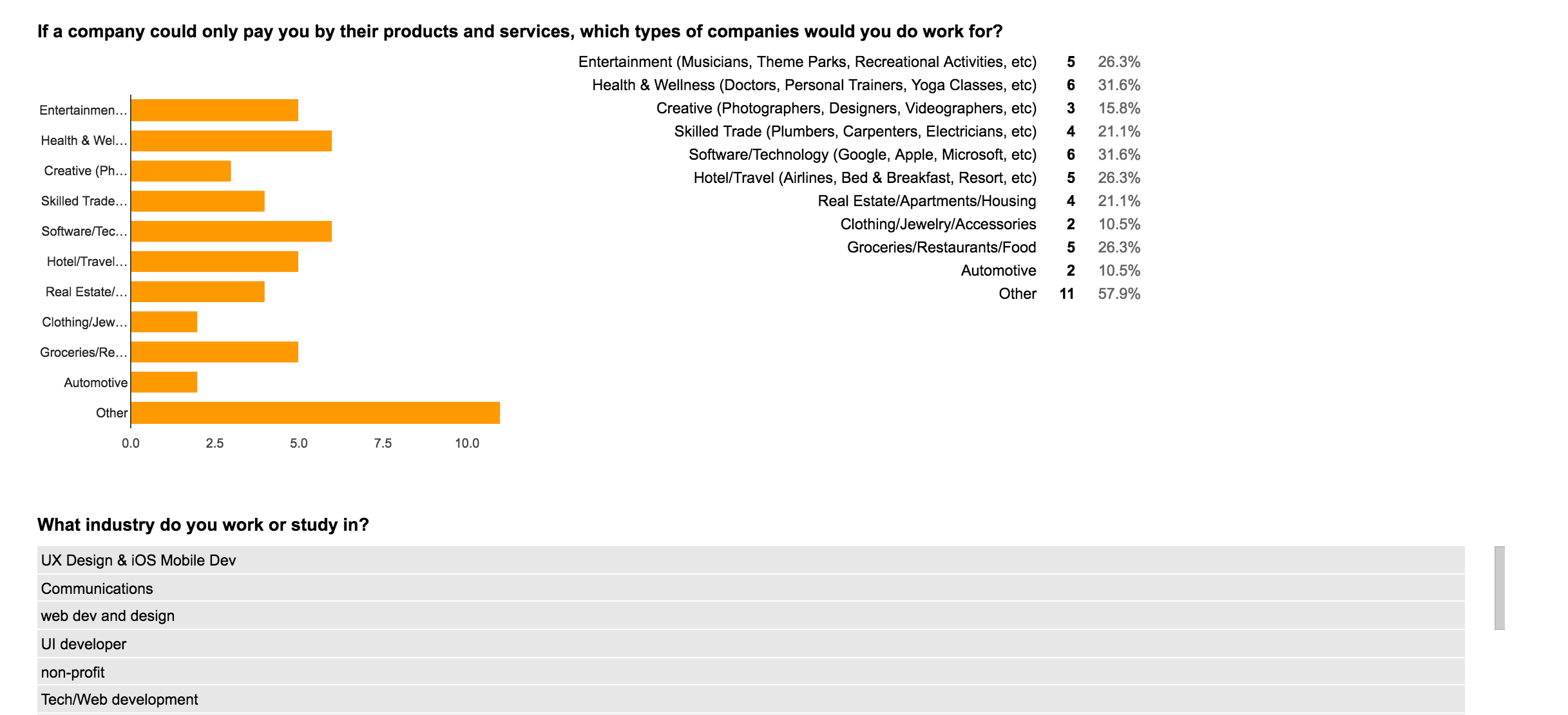
In follow up conversations, some concerns, comments, and questions came up below:
In further follow up, 3 companies were brought up in conversation in which I conducted a competitive analysis:
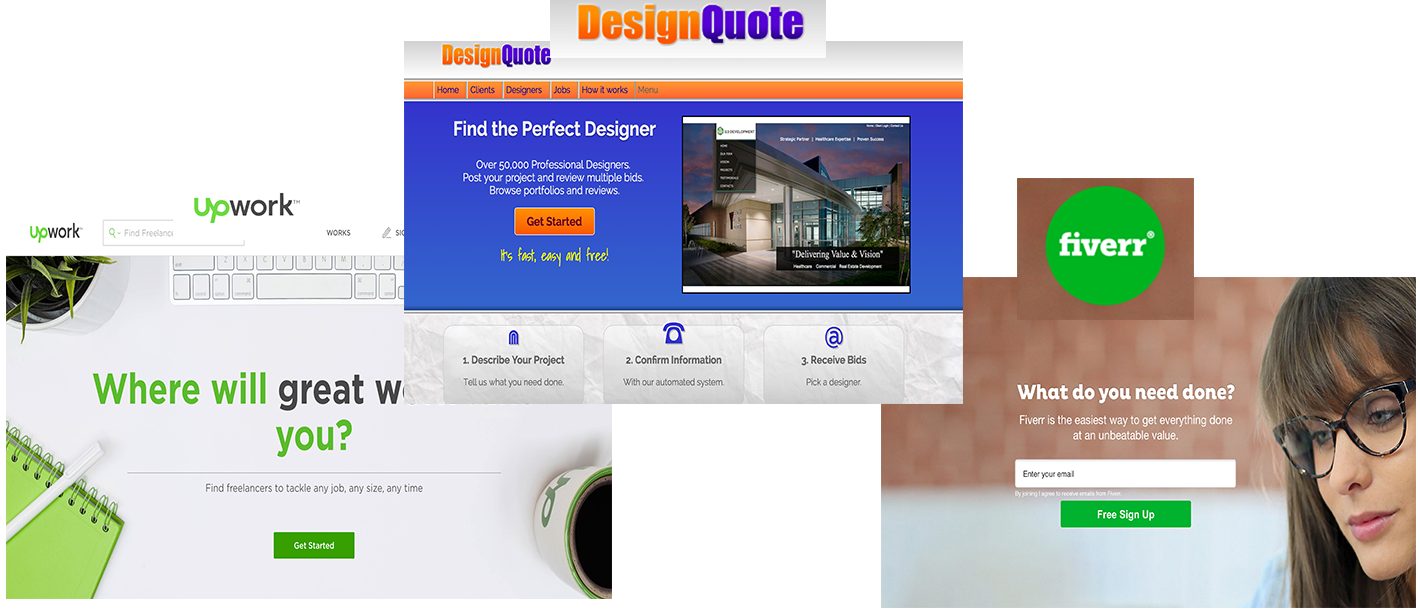
Due to my research, I decided to stick with using trade as a form of payment as it acted as a differentiation in my competitive analysis. An emphasis on web design/development students and small businesses was also key in differentiation, but decided to use the quoting system from Design Quote to establish trade value in what amounts of design and development was worth. From this, I was able to move forward and put together my user persona, user flows, and first set of wireframes.

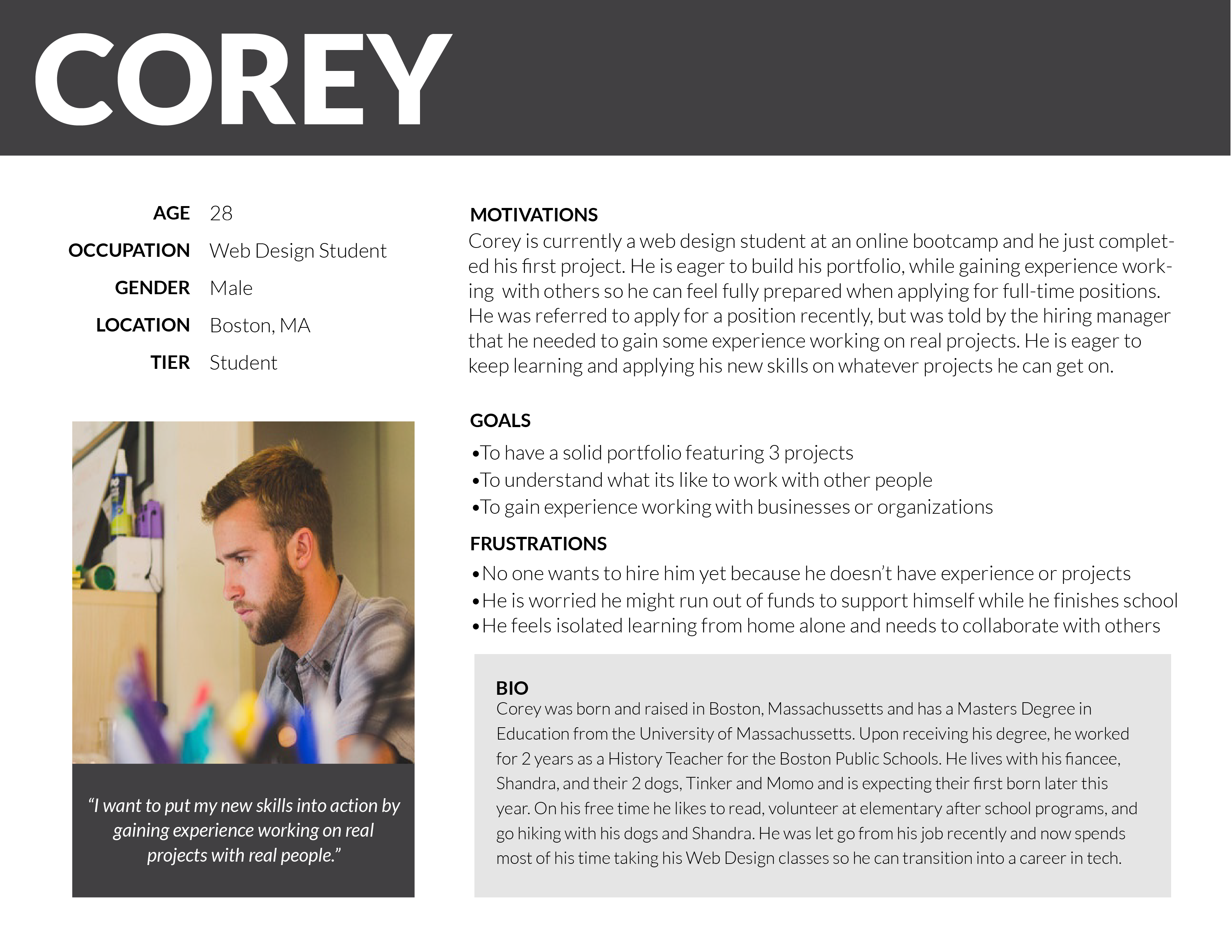
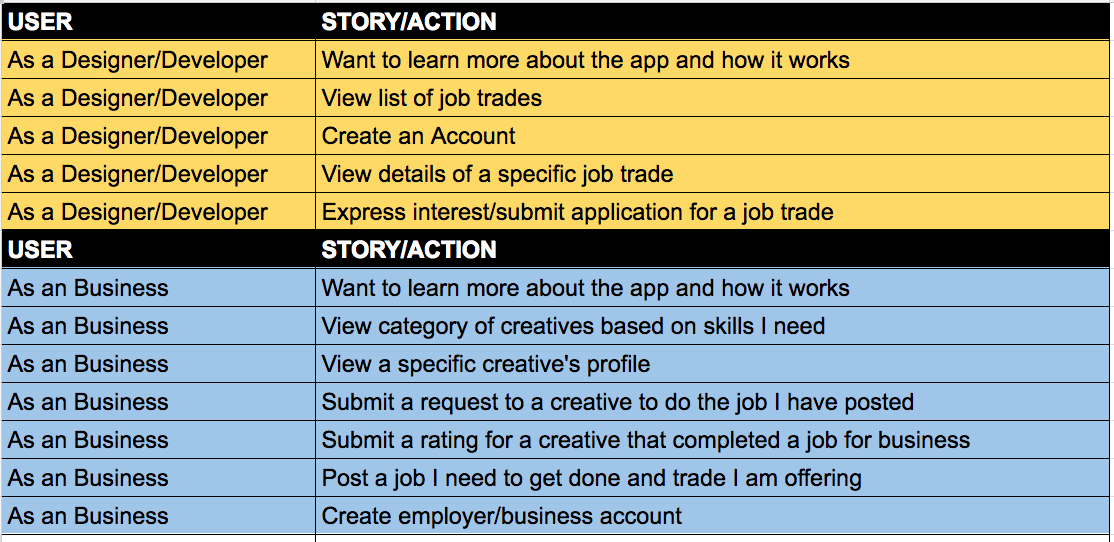
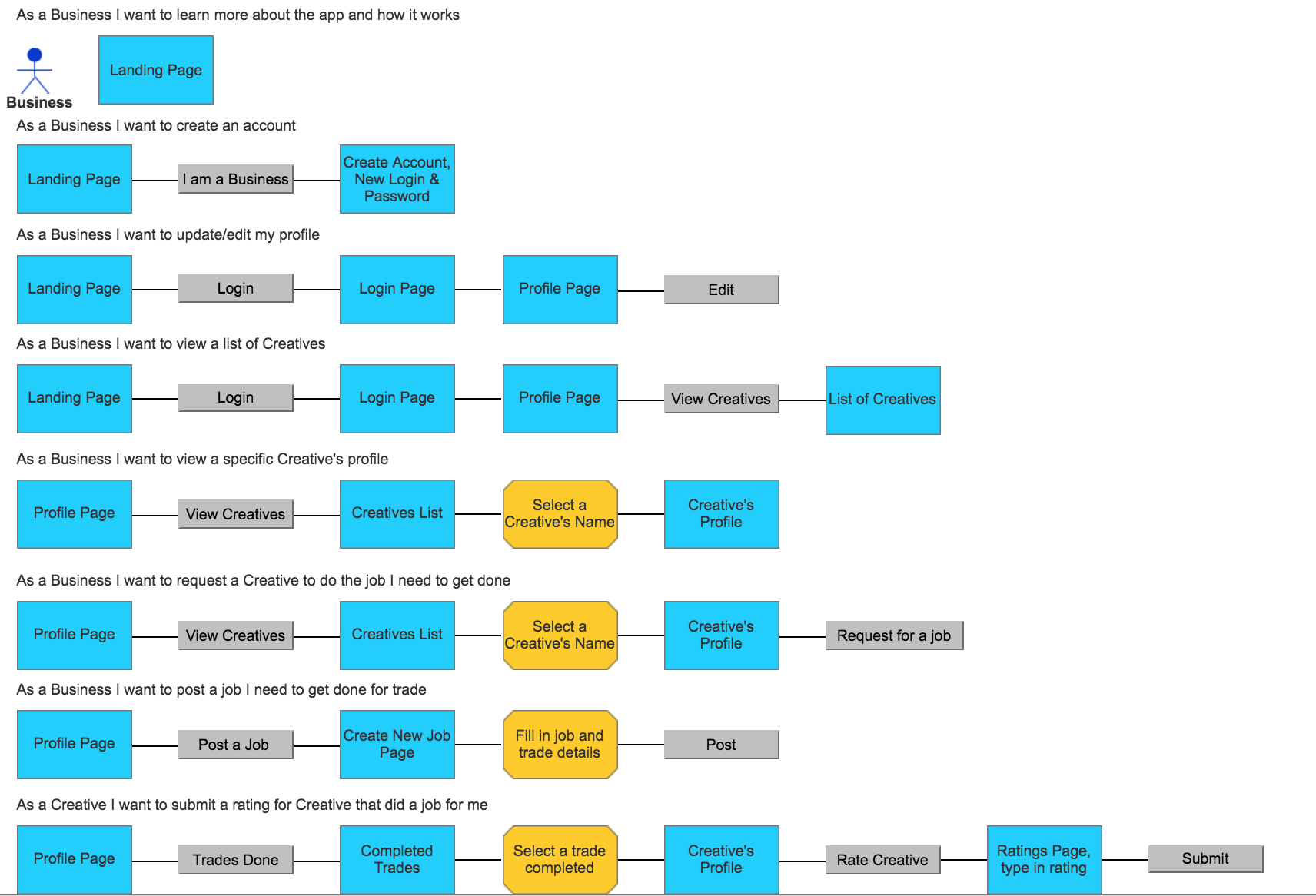
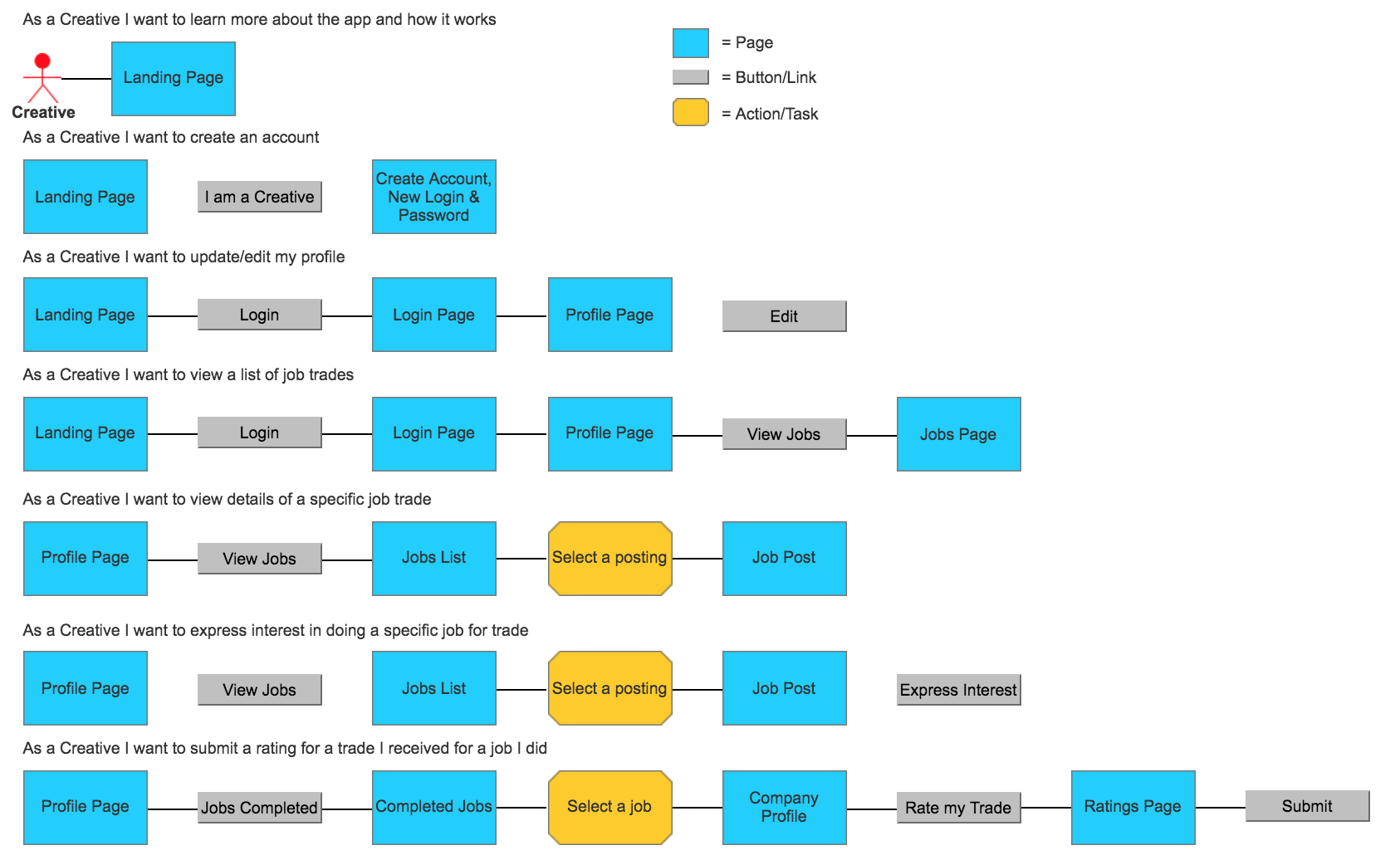
I designed my first set of wireframes using Axure and conducted video tests with prospective users in person, skype, and google hangouts using my laptop and video camera. The initial video tests helped me to better understand what else could be improved upon in the design.

From the first set of video tests, I discovered I needed to further elaborate on the costs to a business. Additionally, I discovered that one of the most appealing ways to provide trade payments were through gift cards or gift certificates. One user also pointed out where she expected a call to action, but didn’t see one. User Tests confirmed further interest in the project which provided much enthusiasm for me to keep going. I now felt ok to start creating a style guide and branding for the project.
CRUX is an acronym for Creating/Connecting Resources/Relationships and User Experiences. In the dictionary, CRUX is also defined as "a vital, basic, decisive, or pivotal point" and "a particular point of difficulty," which is fitting in terms of the experience a budding web professional goes through in transitioning into a new career and what a small business faces when getting started.
The colors for CRUX needed to appeal to individuals in their 20s and 30s undergoing a career transition. It needed to appeal to small businesses as well, so a balance between professionalism and vibrance was important. The selection of lighter colors appeals to the young and new, which appeals to students, and hues of blue appeal to business.
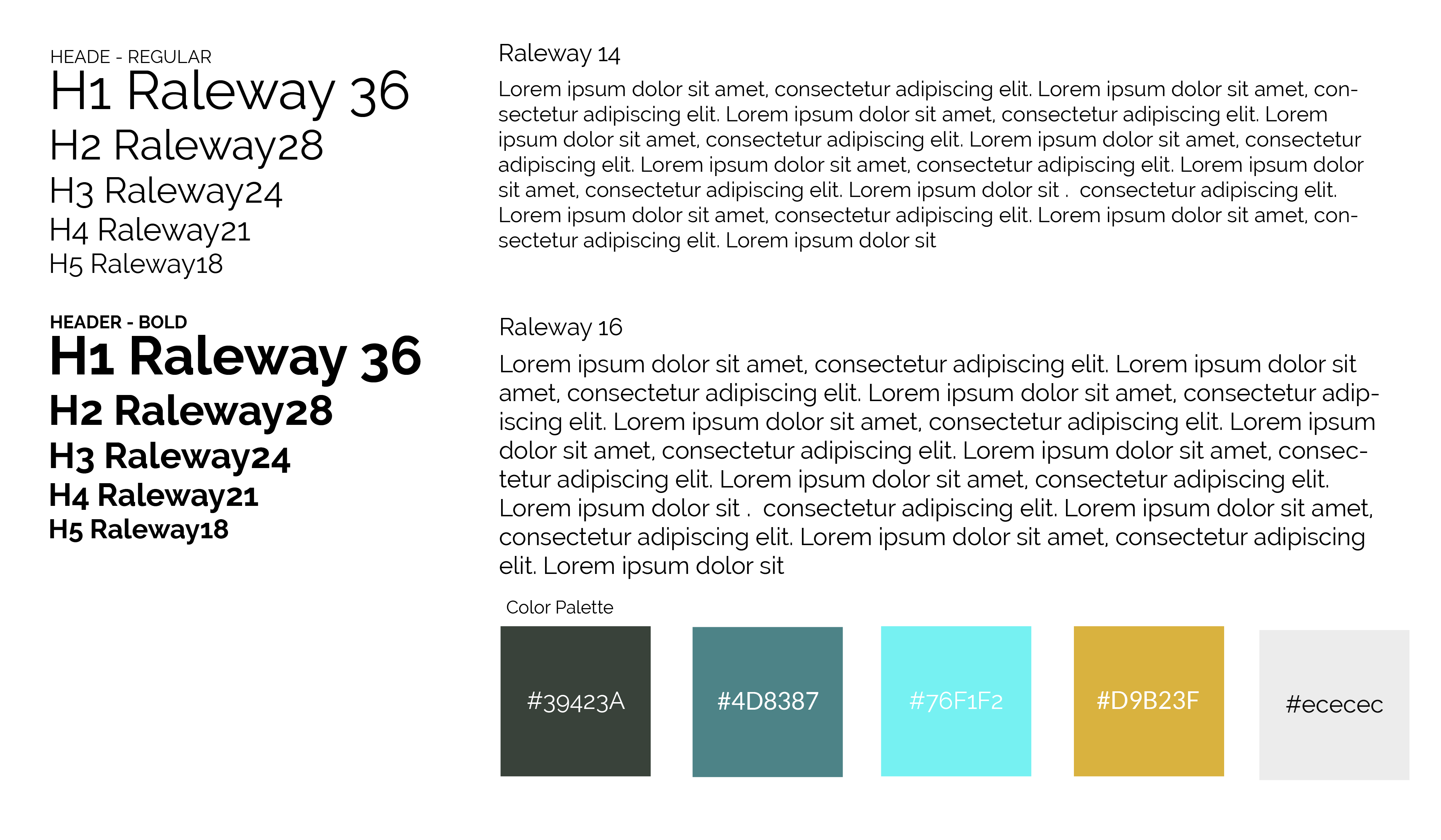
A typeface that exudes a modern and stylistic appeal was needed to exemplify the balance between a student and a professional. Raleway fit the description, as it provides an approachable feel needed when bridging a designer and a client. With font sizes ranging from 15-36 pixels, it offers good legibility for links, headings, the logo, and text.
When creating a mind-map to generate ideas for the logo design, a flower bud kept coming to mind as a representation of growth for both business and "budding" web professional. I also kept thinking of a pencil/pen to represent the many drawings and revisions a designer goes through until a conclusion is reached. A graduation scroll was another idea to define the turning point a student and new business udergoes when reaching a new phase in their career or development. In the end, I decided to go with the pencil and a solid line crossing to form the “X” in CRUX, to represent the dictionary definition of the word combined with the transition a student and small business goes through, which is a “vital, basic, decisive, or pivotal point.”
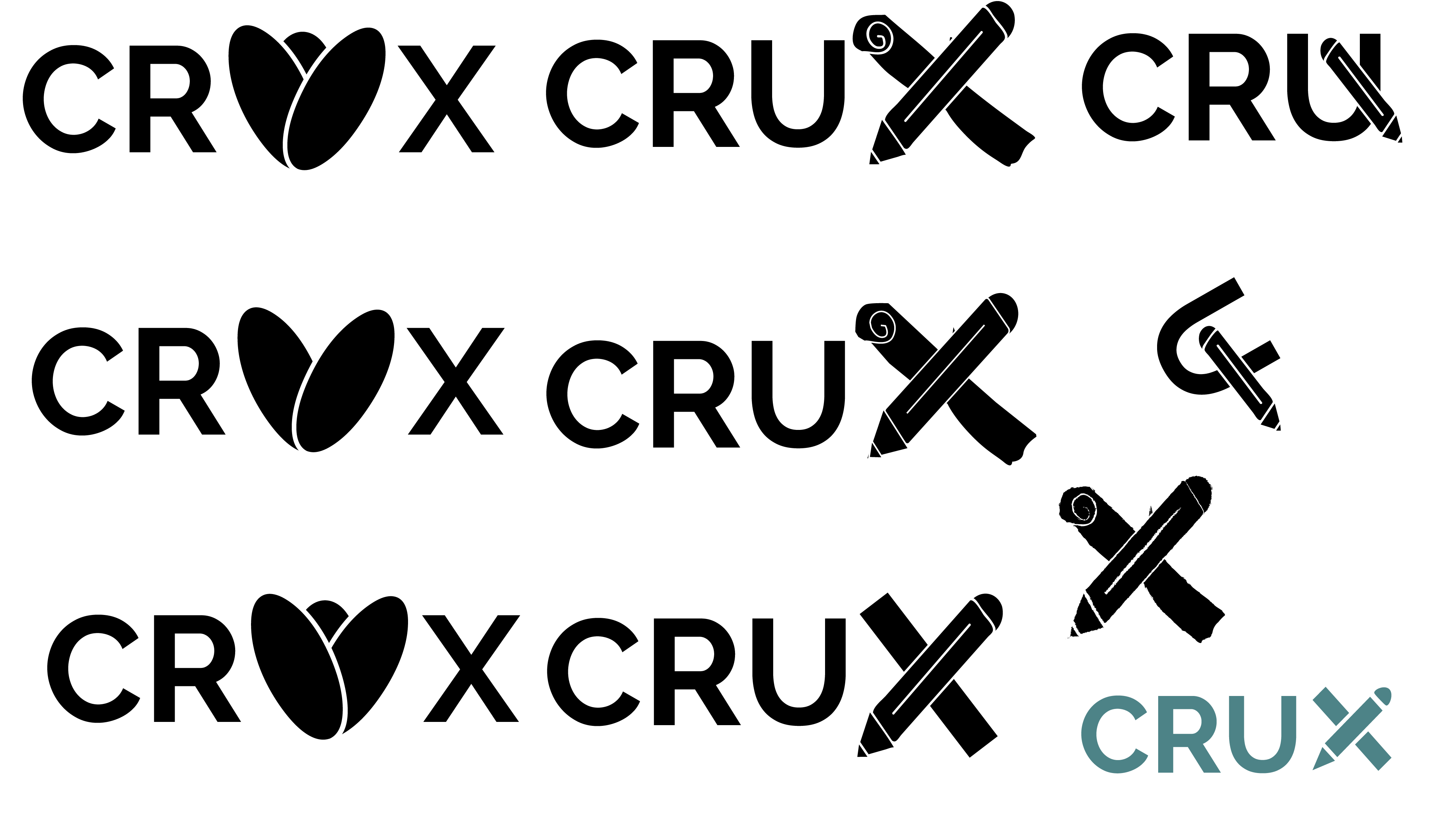

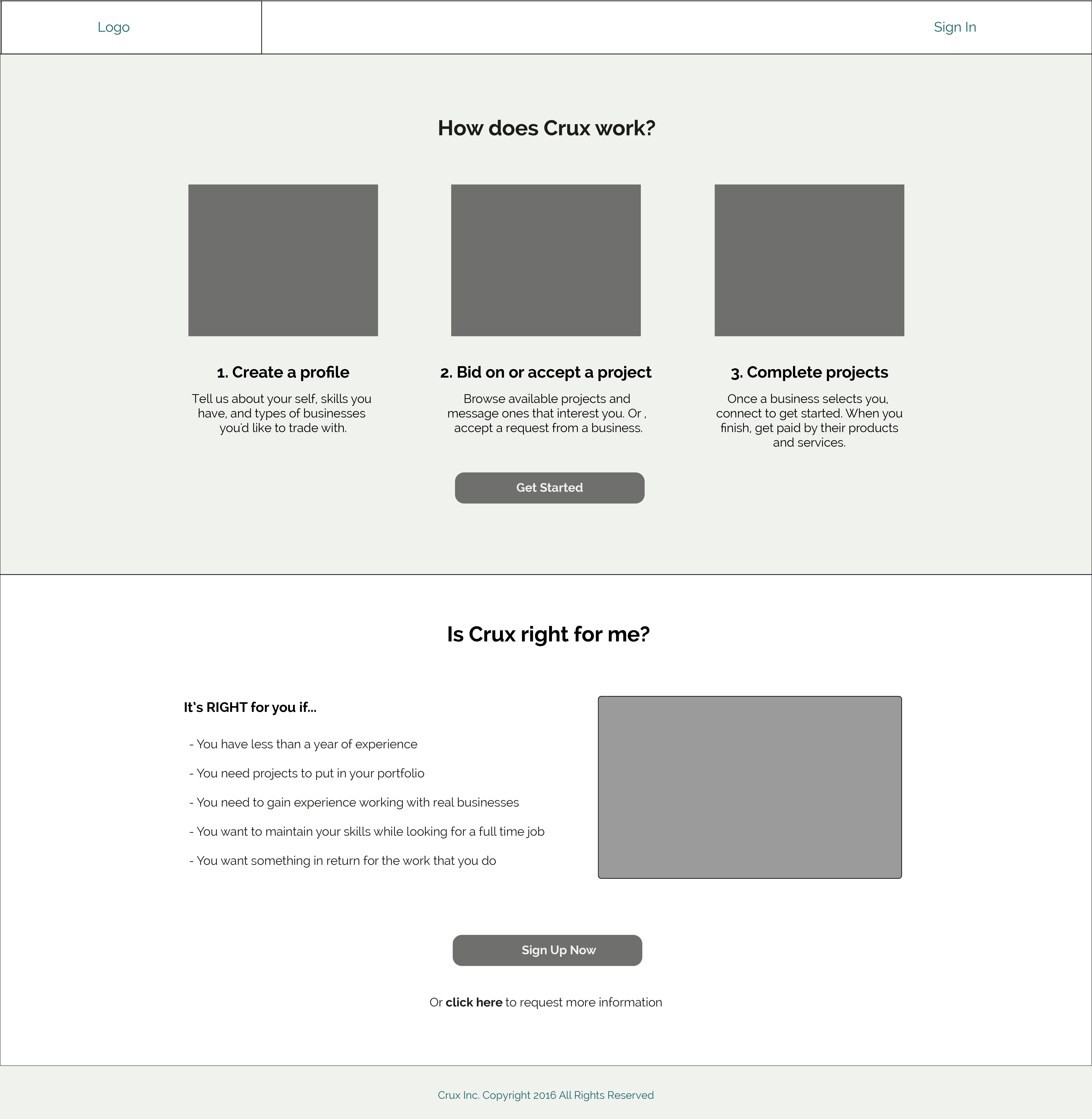
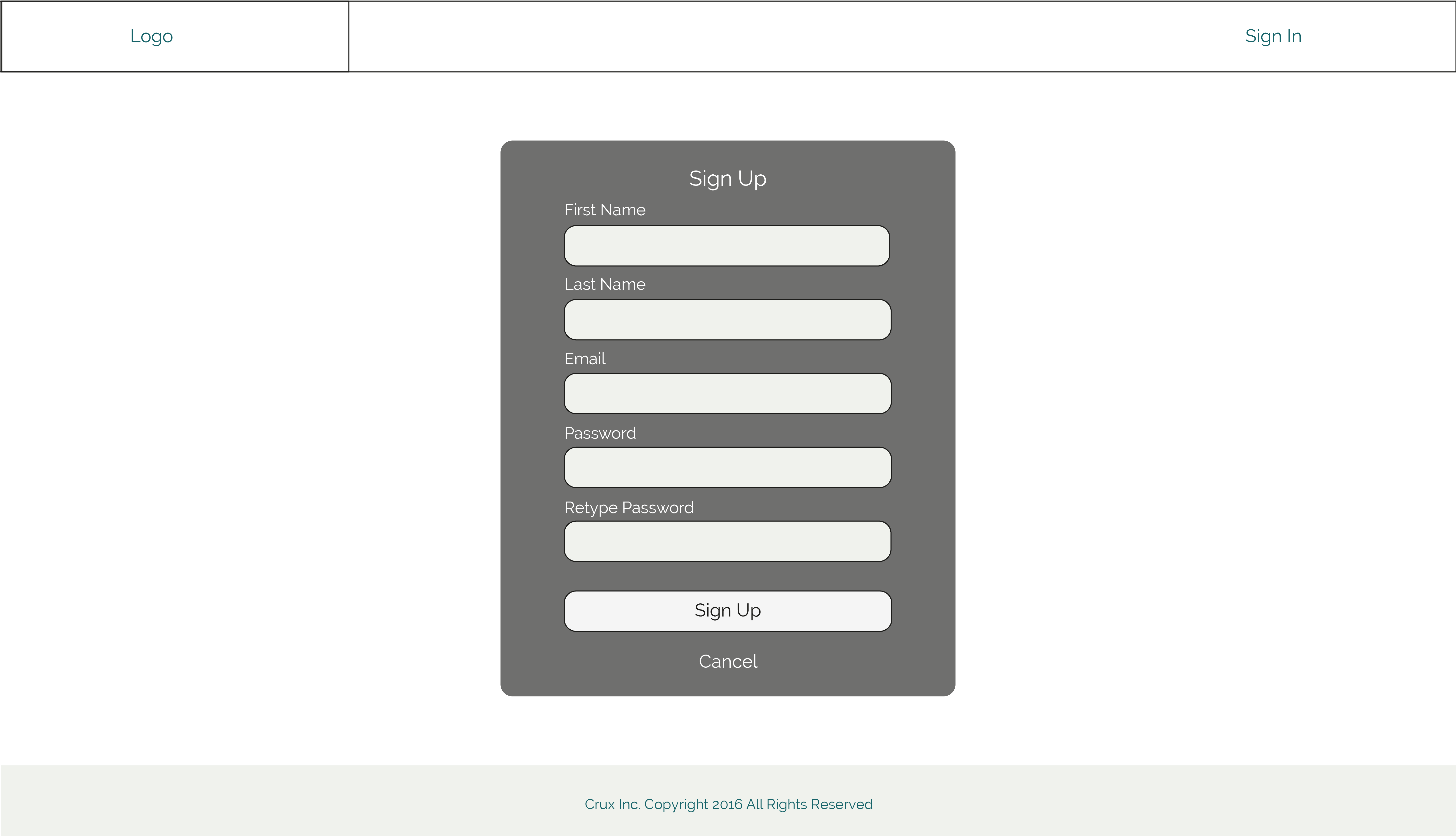
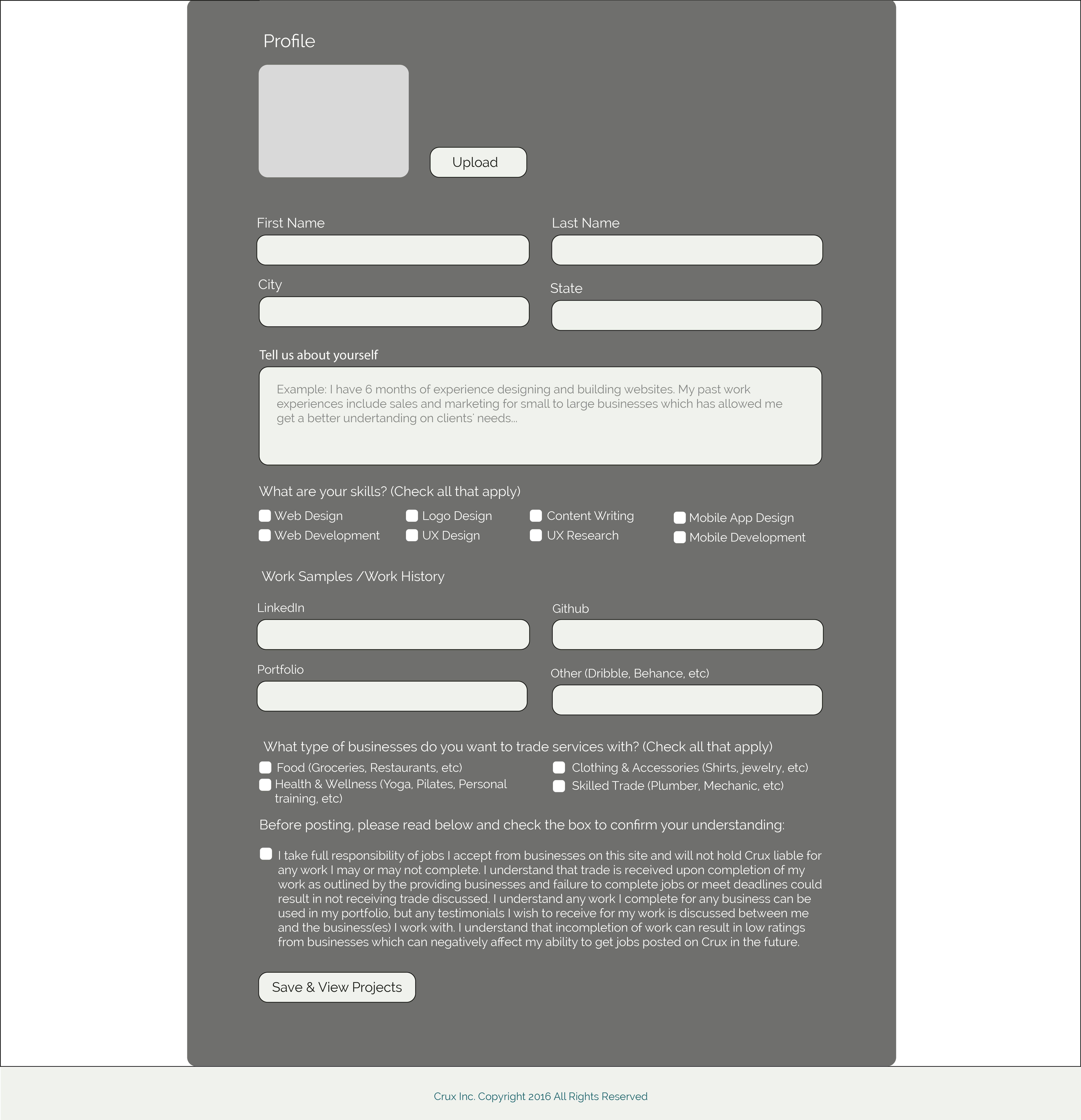

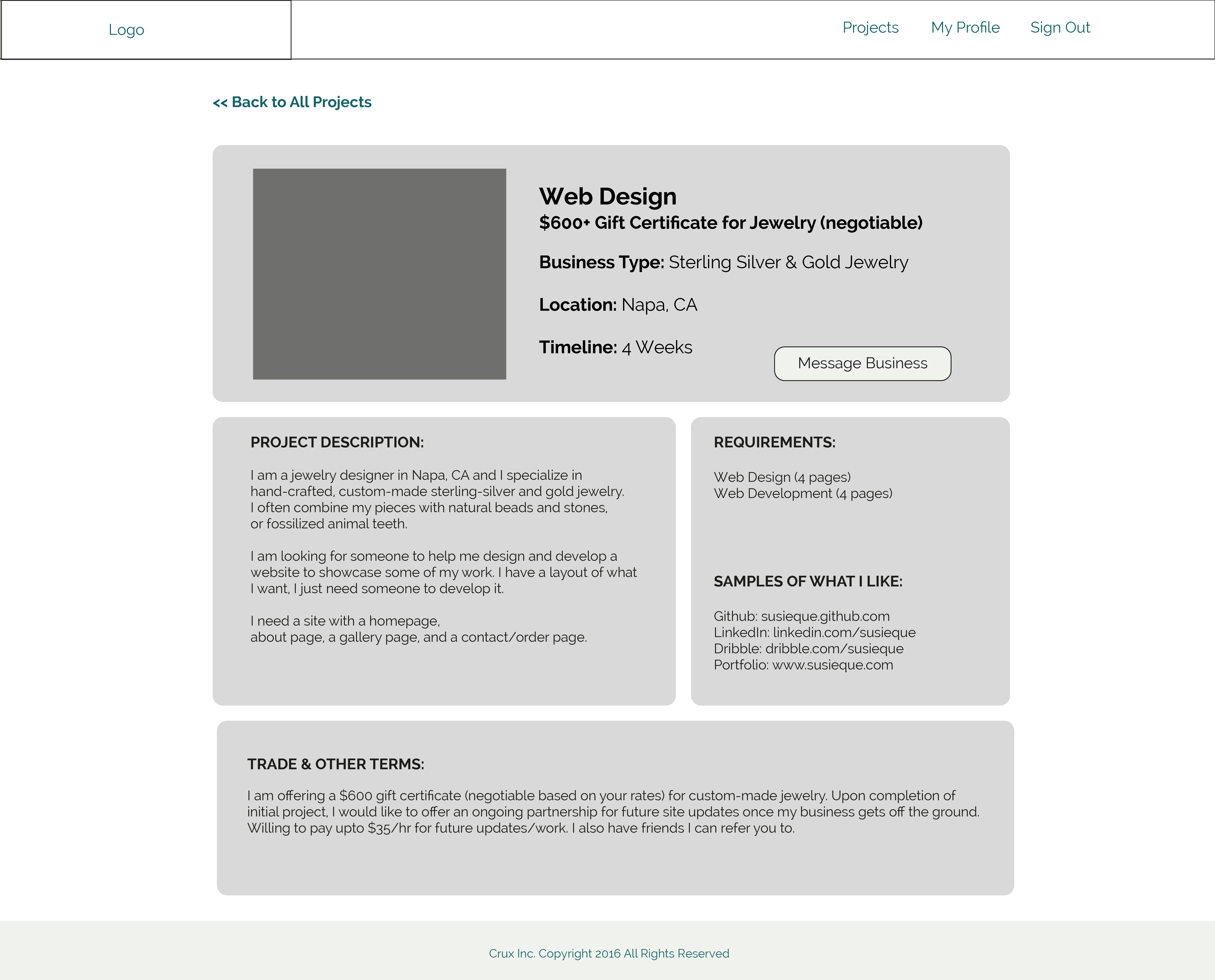
With further research on market trends on color use and balance on my forms and layouts, coupled with my user tests, I was ready to put together a mock up.

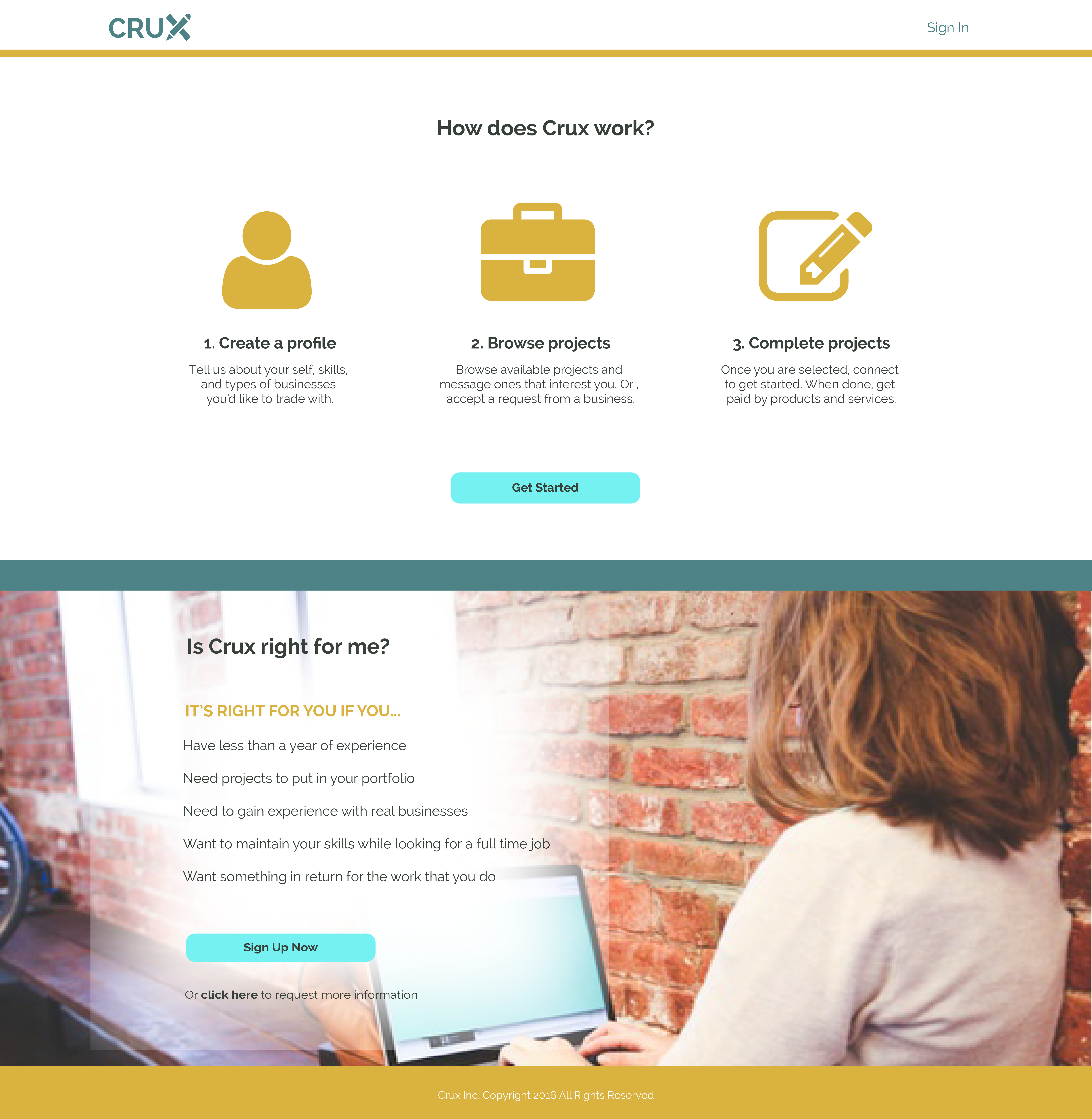
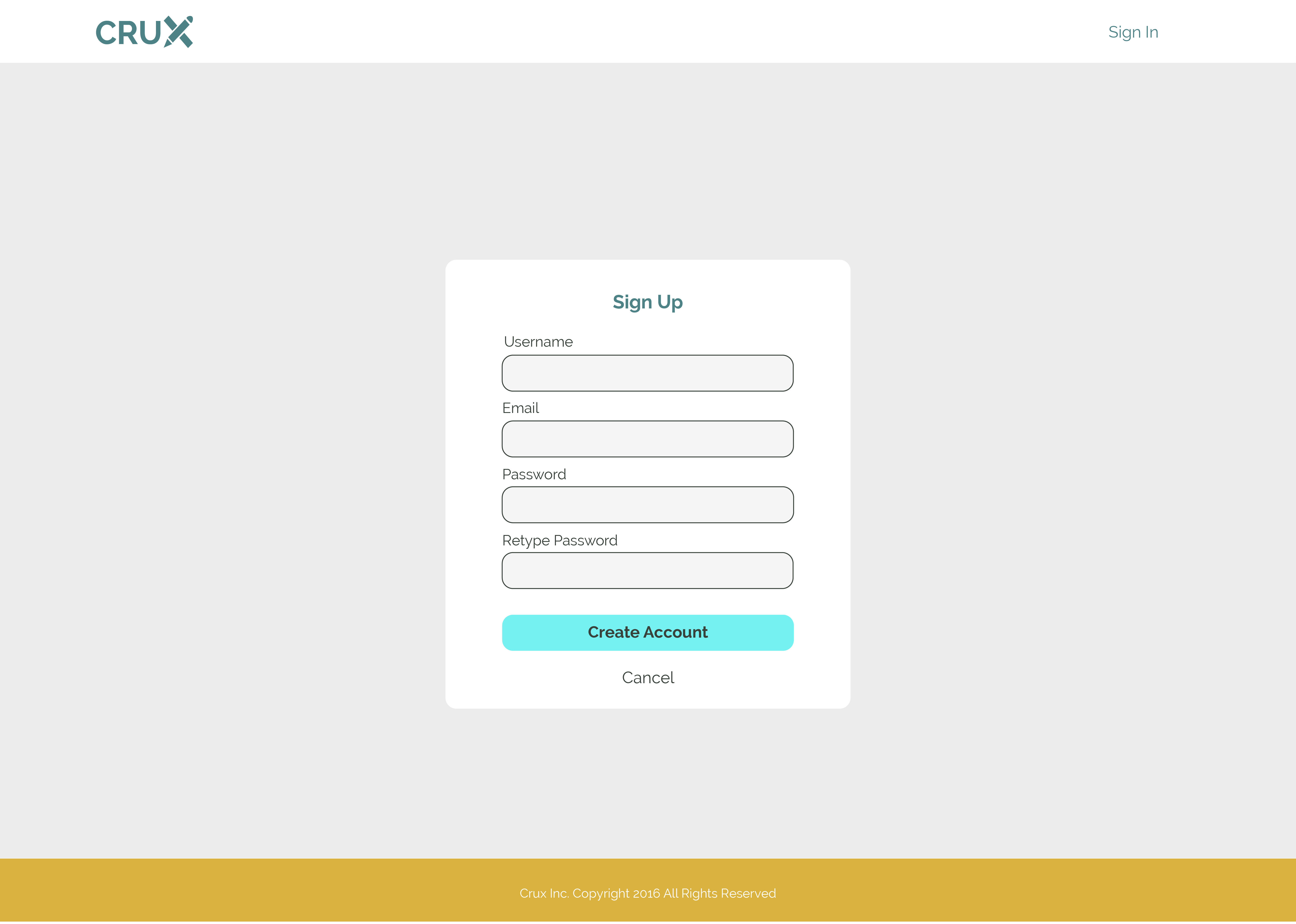

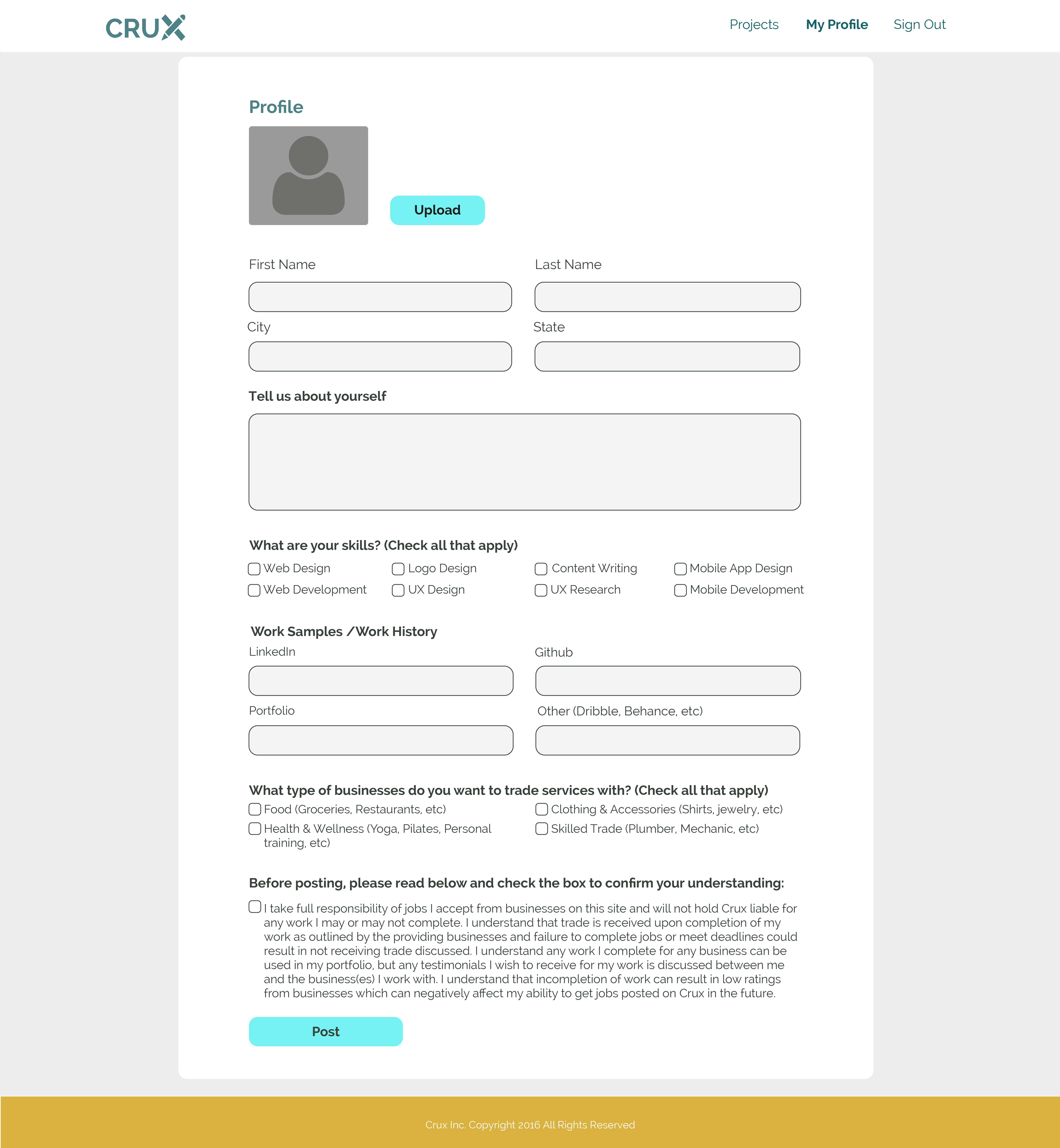
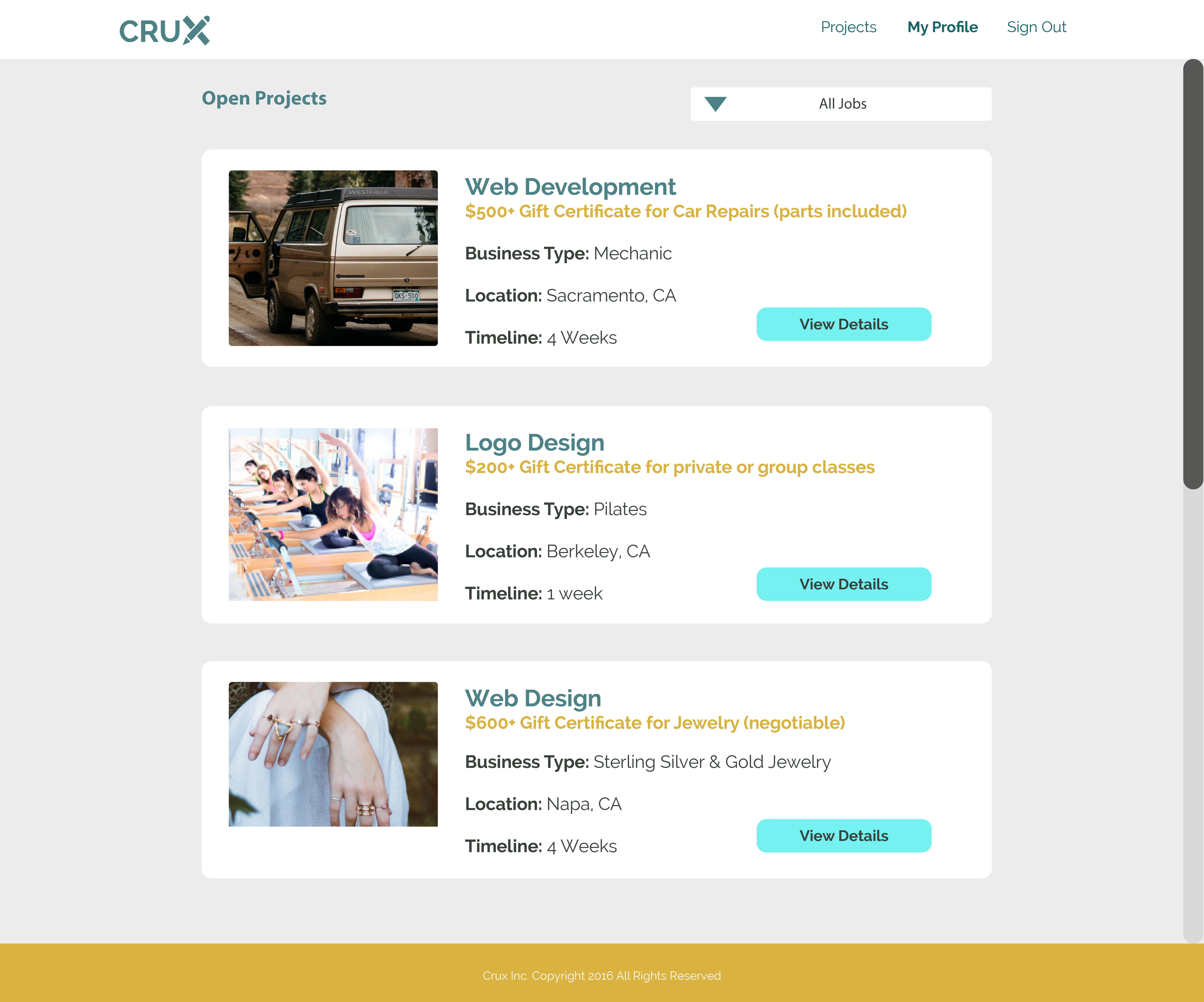
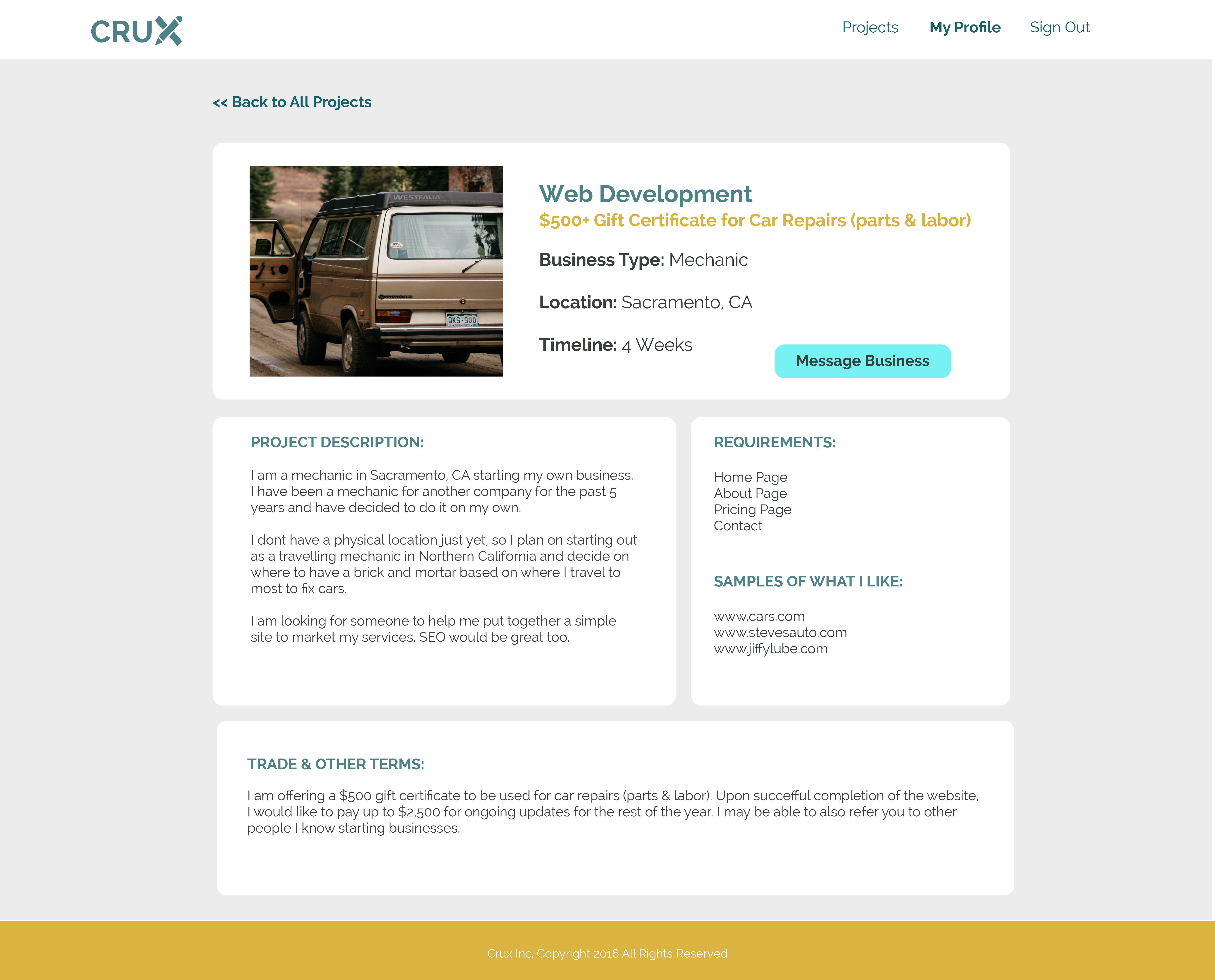
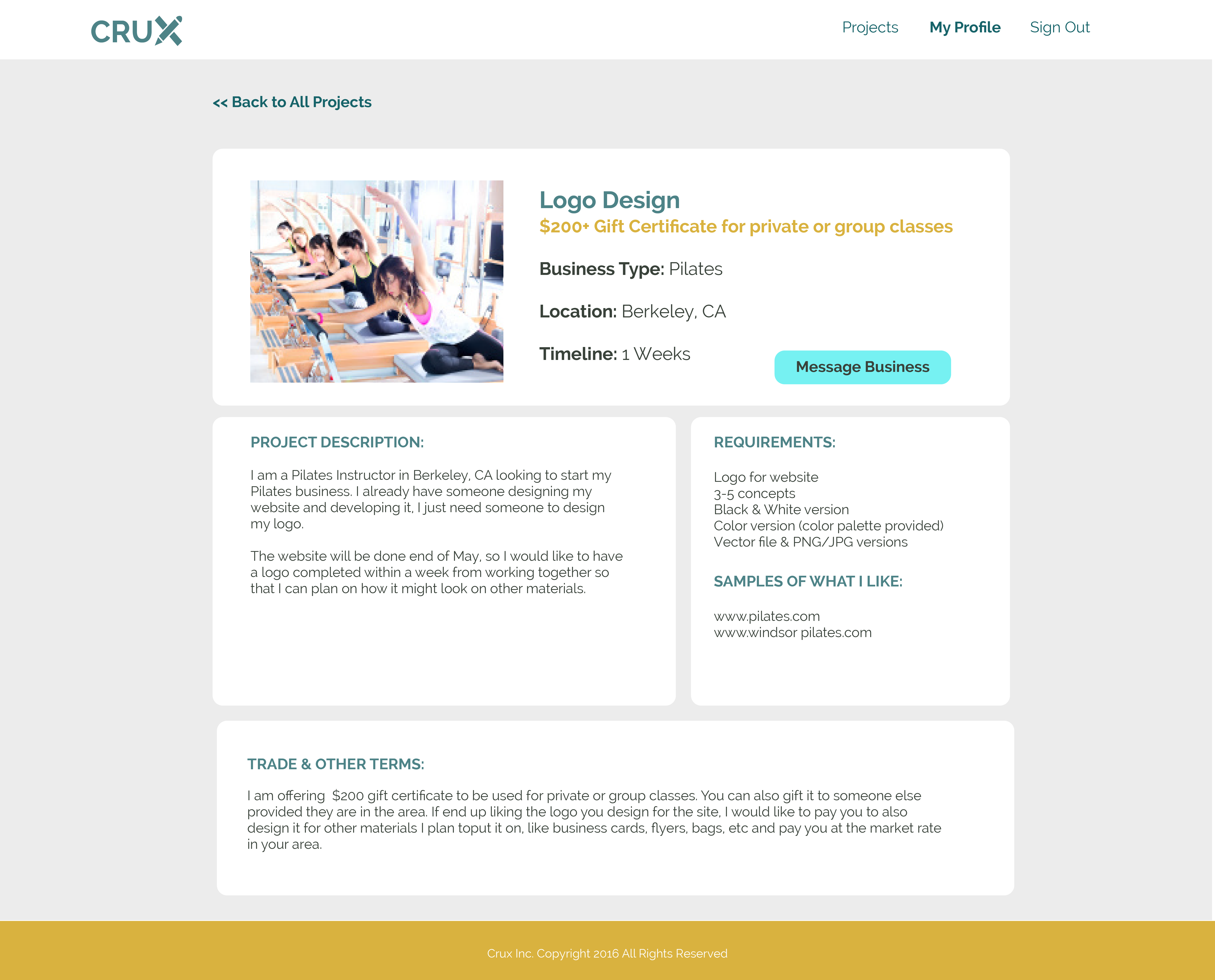
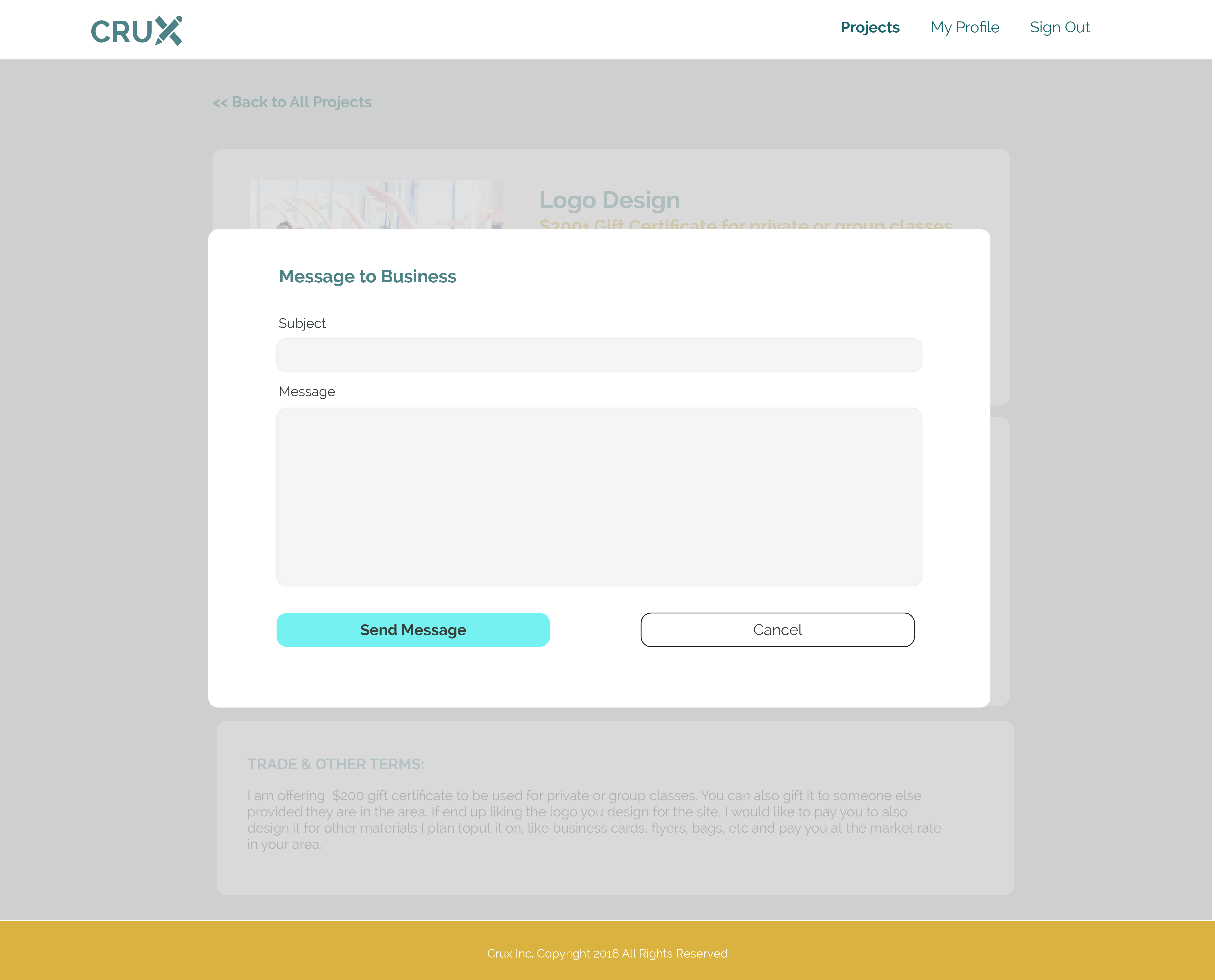
The front-end development for this project is still in process. View the progress so far on my github page.
Due to the time limit I had during my apprenticeship to work on this project, figuring out a way to simplify this huge concept/idea was my biggest challenge. I knew a lot of questions would be brought up along the way, and endless research could be done to identify numerous features to add to the project. However, the research conducted so far have provided validation that this project can serve a purpose in helping web design/development students in easing the process to build their portfolios with real businesses.
The second phase of this project will be to conduct research of small businesses to understand their goals, needs, frustrations, and behaviors. Further research can also be done to identify the extent of interest from small businesses. Research was an essential piece in identifying if this project could work, and I had a lot of fun reaching out and connecting with different people for surveys, user tests, and feedback. My goal is to continue working on this project with continued research, design, and development. I haven’t decided if I want to make a business out of CRUX, or to propose it as a program to an educational company in the tech space. It can also serve as an additional stream of income for a staffing agency. Whatever the direction I choose, the important thing is that it fulfills its primary purpose in helping budding web professionals gain experience with real businesses while building their portfolios.